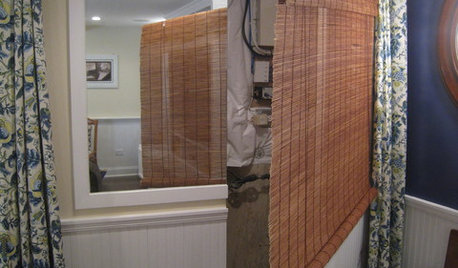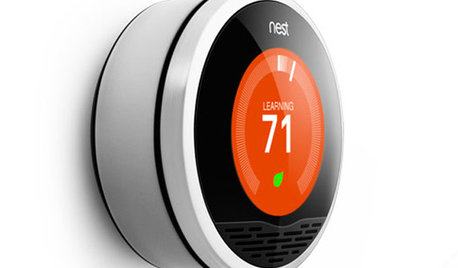Older Home Security System - blowing fuse
rjexit5
10 years ago
Related Stories

MORE ROOMSFuse Box Takes Cover
Her basement under siege from an unsightly fuse box, one Houzz user fought back with a clever camouflage
Full Story
FENCES AND GATESModern Fencing for a More Secure Home
Deter would-be burglars without robbing your home of style, by installing a modern fence like one of these
Full Story
HOME TECHWatch It! New Cameras Let You Video Chat, Stay Secure and More
Wouldn't it be great to have a single camera for home security, checking pets, chatting online and making videos? Now you can
Full Story
FUN HOUZZGeek Lab: How to Build a Steampunk Cat Transit System
Give your kitty another avenue for fun with a tubular walkway system that lets him go his own way
Full Story
HOME TECHHome Tech: There's an Easier, Affordable Future for Home Automation
Say goodbye to the headaches and high price of current systems, and hello to home automation products for the masses
Full Story
LIFE10 Ways to Keep Your Home Safe While You're Traveling
Set off on your trip with peace of mind, knowing you've taken the right steps toward keeping your home secure
Full Story
REMODELING GUIDESOriginal Home Details: What to Keep, What to Cast Off
Renovate an older home without regrets with this insight on the details worth preserving
Full Story
MOST POPULARMy Houzz: Hip Midcentury Style for a Mom's Backyard Cottage
This 1-bedroom suite has everything a Texas mother and grandmother needs — including the best wake-up system money can't buy
Full Story
FUN HOUZZ31 True Tales of Remodeling Gone Wild
Drugs, sex, excess — the home design industry is rife with stories that will blow your mind, or at least leave you scratching your head
Full Story
REMODELING GUIDESConsidering a Fixer-Upper? 15 Questions to Ask First
Learn about the hidden costs and treasures of older homes to avoid budget surprises and accidentally tossing valuable features
Full StoryMore Discussions






Ron Natalie
bus_driver
Related Professionals
Burlington General Contractors · Browns Mills General Contractors · DeSoto General Contractors · Euclid General Contractors · Foothill Ranch General Contractors · Jefferson Valley-Yorktown General Contractors · Lincoln General Contractors · Rossmoor General Contractors · Forest Park Solar Energy Systems · Hemet Solar Energy Systems · Imperial Beach Solar Energy Systems · Rialto Solar Energy Systems · Baltimore Home Automation & Home Media · Richfield Home Automation & Home Media · Wheaton Home Automation & Home Mediawestom
Ron Natalie
westom
Ron Natalie
bus_driver
rjexit5Original Author
Ron Natalie